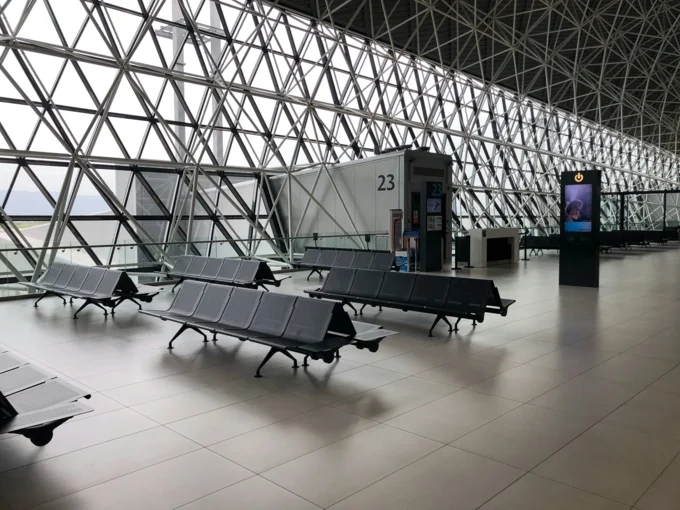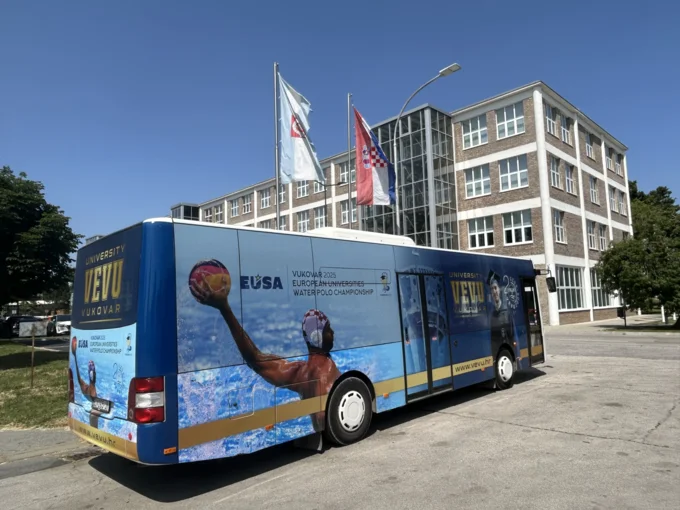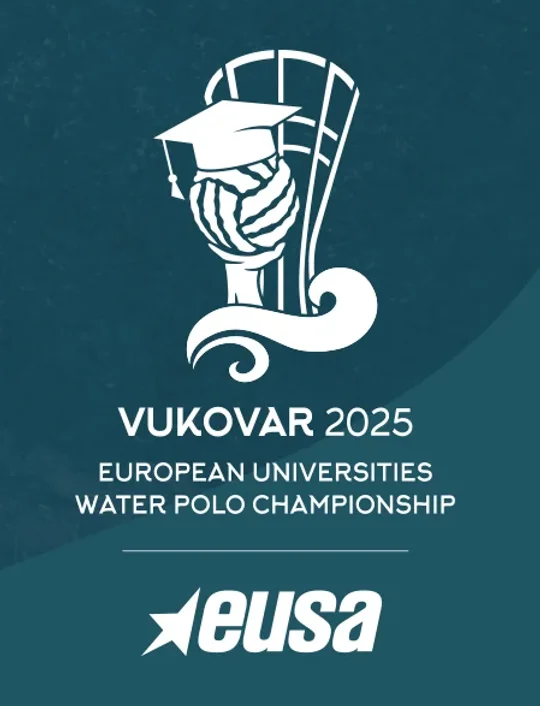Official welcome point
During the European Universities Water Polo Championship 2025, transport services for all accredited participants and officials will be provided with transport. All vehicles are air-conditioned and may vary in size depending on the number of passengers and the type of service provided. Transport will be organised to the competition and training venue, catering, and accommodation.
Zagreb Airport (Zračna luka Franjo Tuđman)
Zagreb Airport is the largest international airport in Croatia, located approximately 2.5 hours by road from Vukovar. A welcome point with EUSA Water Polo 2025 volunteers will be located inside the arrival terminal.
Upon arrival, please:
1. Collect your luggage
2. Look for our official EUSA Water Polo 2025 welcome sign and volunteers
3. Follow directions to your assigned shuttle bus or vehicle
Organised transport will take you directly to the accreditation zone or your accommodation in Vukovar. Departure is organized in the same way, from the accommodation point to the Zagreb airport.
For any questions or assistance, feel free to contact us at: waterpolo2025@eusa.eu
Arrival & departure transfers
Official arrival days are 6 and 7 July 2025. Whether arriving by air, train, or bus, welcome points will be set up at main transport terminals where participant arrivals are expected.
Local transportation – competition week
Dedicated shuttle buses will operate daily to connect all accommodation sites with the competition venues, training facilities, and official restaurants.
› Circular shuttle bus lines will run according to a fixed schedule, which will be displayed at accommodation lobbies, info points, and on official notice boards.
› All accredited participants can also use public transport free of charge upon showing their accreditation badge.


